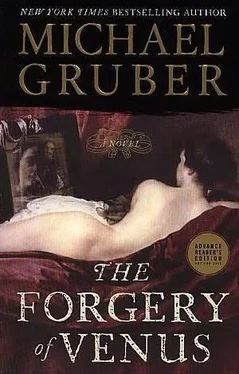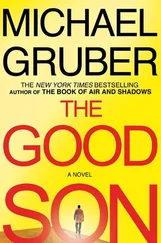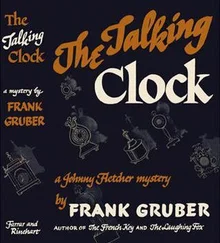“What was the other business?” I asked.
“Well, you know, the remarkable thing about the Nazi looting is that they kept nearly impeccable records of everything they took. For example, at Nuremberg, at the trial of Alfred Rosenberg, the prosecution presented thirty-nine thick volumes that cataloged everything they’d confiscated, with photographs of the art. There were hundreds of such volumes in all. The Allies seized roomfuls of filing cabinets with tens of thousands of index cards: descriptions of the art, who they took it from, and so on.
“So let’s say it’s the middle of 1944, and you’ve been stealing art and making these very catalogs for four years, and you are a smart person and so you know that the Nazis are finished, and suppose you wanted to feather your nest after the war. You might contrive to search out a selection of valuable pieces, nothing too showy, and neglect to place these pieces in the catalogs, and naturally you would strip out the relevant index cards too. And you would choose just those things that belonged to Jews who had died in the camps and who left no survivors at all. For someone with Horst Krebs’s old Nazi connections that information would be easy to get. And then you would use the excellent forging capabilities of the SS to generate phony bills of sale, so that instead of, say, a nice Pissaro being sold to a Jacques Bernstein of Paris in 1908, it was shown as being sold to a Kurt Langschweile of Geneva, Switzerland, same year. Then, after the war, Herr Langschweile’s heirs supposedly sell the painting to the respectable firm W. H. Krebs, of Frankfurt. Yes, we know that the proprietor is the son of the notorious Horst Axel Krebs, but in the Federal Republic they do not look too closely at what your father did in the war, or else there’d be no business at all. Old Krebs died in his bed in seventy-nine, by the way, a pillar of the community.”
“And he still does this?” I asked. “I mean Werner.”
“Not anymore. And there has never been, to my knowledge, any solid evidence that he ever did it. As I said earlier, the Nazi hoard was so enormous and the artworks went through so many movements and changes of custody, and so many people had access to them during the crazy years, that countless pieces were lost track of. It is just a fact that the younger Krebs made his initial fortune selling small, well-chosen Impressionist and early-twentieth-century pieces he bought in Switzerland. Plenty of Jews shipped stuff out to Switzerland in pawn to raise money after they were stripped of their livelihoods during the thirties. Then they were murdered and the artworks belonged to the people they sold them to. The phony provenances were a nice added touch, a little insulation, and the SS forgers who did them for Krebs are deceased, most of them having been prisoners of various kinds, Jews and so forth. So there is nothing but hearsay against him, but there is a lot of it, and it is consistent.”
By this time we were in the campo in front of the great white elevation of San Zacccaria, and we paused under the shallow portico to get out of the rain.
“Did you ever meet him? Krebs?” I asked.
“Only once. Krebs was offering for sale a Derain landscape that the French authorities spotted as the property of a Paris clothing manufacturer named Kamine. The man and his family had perished during the war, but a son had escaped to England, and it was his heirs who were making the official claim. Well, not to bore you with the details, but Krebs admitted he had made an error, that the provenance he had was a fake, and he handed over the painting with an apology.”
“And…”
“Well, I looked at the painting and I had experts look at the painting. The experts said it was Derain. The paint was good, the canvas and frame…but all they had to go on was a faded black-and-white print. I thought it was a fake, but my opinion wasn’t probative and so the return went through.”
“So what happened to the original? I mean, if you were right. A buyer could never sell it on the open market.”
“True enough, but you realize there’s a substantial closed market for artwork. There are any number of people who want to own old masters and Impressionists, far more than the honest market can supply, because, obviously, most of the works are in museums already, and the old masters are, well, dead-there are no more in the pipeline.”
“Interesting. What did you make of the man himself?”
“Charming. Cultivated. He knew a great deal about pictures, and not just as a dealer. He truly loved the work. One would think that the stories were true, that he had held on to the remainder of the Schloss paintings.”
“Schloss? I never heard of him. Modern?”
“No, he was not a painter. Adolph Schloss was a broker for department stores and purveyor to the Russian imperial court. He was a fabulously wealthy Jew, a French citizen, who assembled what was probably the finest collection of Dutch old masters in private hands, back around the turn of the twentieth century, just the sort of paintings that Hitler and Göring liked best. To make a long story short, the Nazis seized the three-hundred-odd paintings in the collection and shipped them to Munich, and stored them in Nazi party buildings there. Hitler was planning a vast art museum in his hometown of Linz, and this depot was where they stored the things they were going to stock it with.
“In April 1945, the Allies entered Munich, by which time the collections had been thoroughly pillaged by various Germans with access to it, and later the Americans did some light pillaging of their own. The Schloss family eventually recovered one hundred and forty-nine of these paintings, with the rest scattered or lost. Evidence presented at the elder Krebs’s trial showed that he worked at the Munich depository in the winter of 1944 and that he left the city with two vans and a military escort in January of 1945. We have no idea what happened to those vans or what was in them. Old Krebs never talked and young Krebs has always denied knowing anything about any stolen old masters. In fact, he always dealt in more modern pictures when he was becoming established.”
Here he stopped and appeared about to say something else regarding Krebs, but what came out was, “But now let’s look at the Bellini.”
We entered the church and I found, almost without willing it, that I had dipped my finger in the marble stoup of holy water at the door and crossed myself.
We stood in silence in front of the altarpiece for a long time, until Maurice sighed deeply and said, “Quite aside from its quality as a work of art, this makes me feel better about my present decrepit age. He was seventy-five when he painted it, can you imagine? Do you know his Nude with a Mirror ?”
“I saw it when I was a kid, in Vienna.”
“His only nude, and he did it when he was eighty -five. Marvelous painting, and at eighty-five!”
“I guess he figured it was safe by then.”
“Indeed. Sadly safe. But now this…how can one do that? To paint the very air around the figures. There is the whole of the Renaissance in one painting. You could with justice say that Giovanni Bellini started the Renaissance in this city, at least in painting, and carried it through decade after decade-incredible! He started painting like Giotto and ended like Titian, who of course was his pupil, as was Giorgione. And always deep, deep thought from a lost age underlying the contemporary style. So he shows us the Virgin and Child all the way back at the rear of the niche, and no one is looking at them. The angel is sawing away at the viola and she and saints Peter and Jerome are facing us, not the Virgin, and saints Lucy and Catherine there in the middle distance are also lost in contemplation. Whatever was he thinking? In nearly every other altarpiece in the world, the Virgin is the center of attention for all the other figures, but not here.”
Читать дальше












